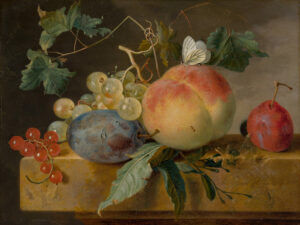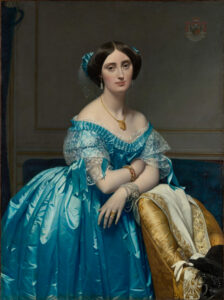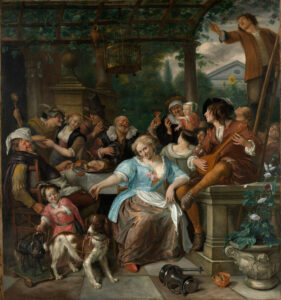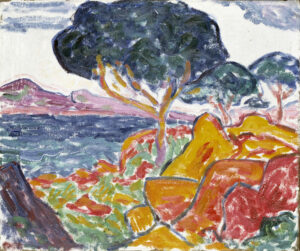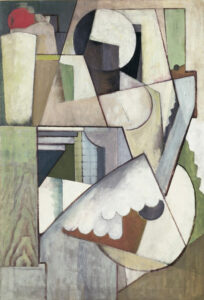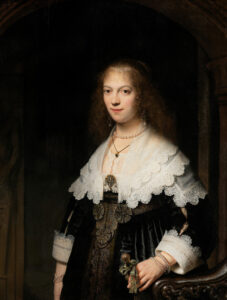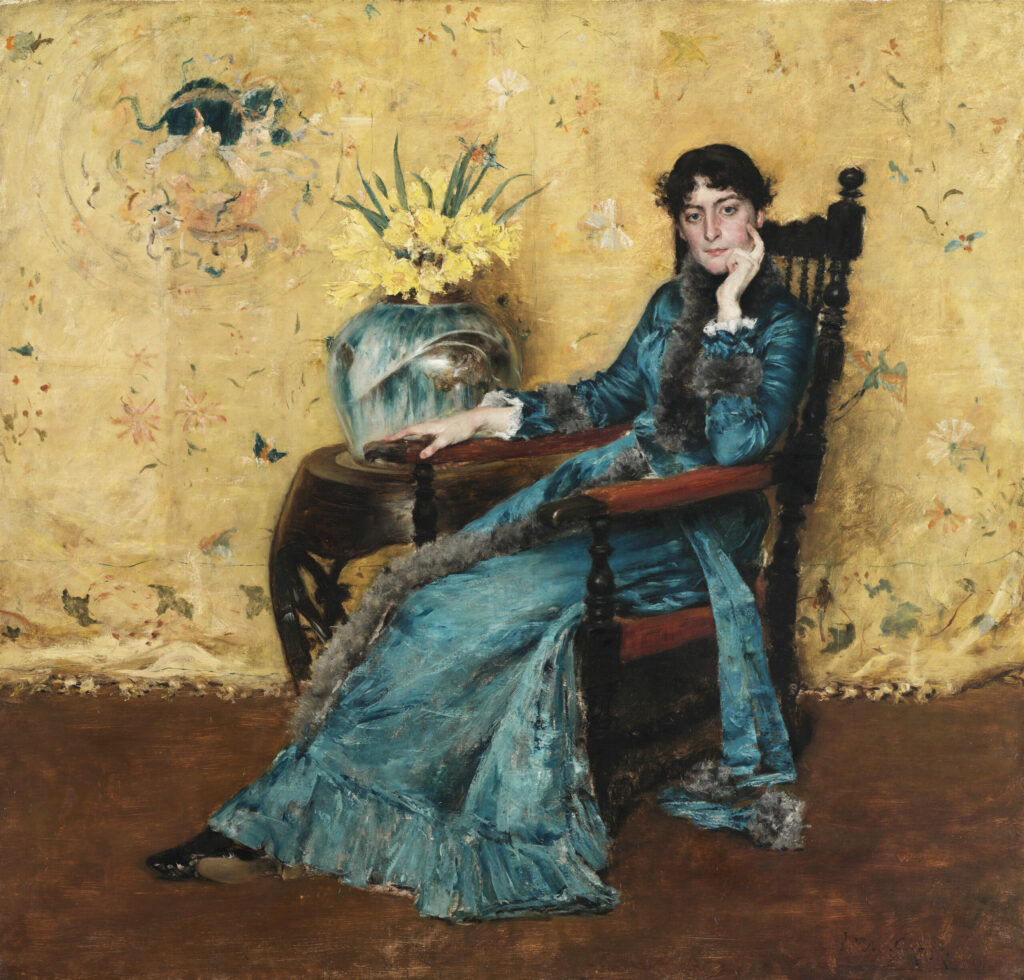
Chase deploys his technical virtuosity in this painting to serve a bold modernity. Dora Wheeler, draped in a shimmering blue-turquoise silk dress, embodies the woman artist of the late 19th century.
Her direct gaze and relaxed pose challenge the conventions of traditional female portraiture. The background, adorned with sumptuous embroidered textile, transforms the space into a precious setting where decorative arts and fine arts merge.
Chase orchestrates a chromatic symphony where the golds of the wallpaper dialogue with the deep blues of the dress, creating a muted and refined atmosphere. The bouquet, rendered with impressionist freedom, brings a fresh note. This canvas transcends the simple portrait to become the manifesto of an era when women entered the artistic space with determination and talent.
Learn more
- Portrait of Dora Wheeler, by William Merritt Chase, 1882–1883
- 159.8 x 166.4 cm (62 15/16 x 65 1/2 in.)
- The Cleveland Museum of Art, Gallery 208 American Gilded Age and Realism
- https://www.clevelandart.org/art/1921.1239
William Merritt Chase (1849-1916) remains one of the guiding figures of late 19th-century American art. Trained in prestigious Munich studios under masters of the dark school, he revolutionized American art education by founding the Chase School of Art. A virtuoso painter of many facets, he excelled in portraiture as well as still life and plein air scenes. A refined cosmopolitan and enlightened collector, Chase synthesized European influences – from Velázquez to the Impressionists – to forge a personal style. An inspired educator, he trained an entire generation of American artists, opening his teaching to women painters. His New York studio, a true cabinet of artistic curiosities, became the symbol of American cultural renewal and the progressive emancipation of arts across the Atlantic.

